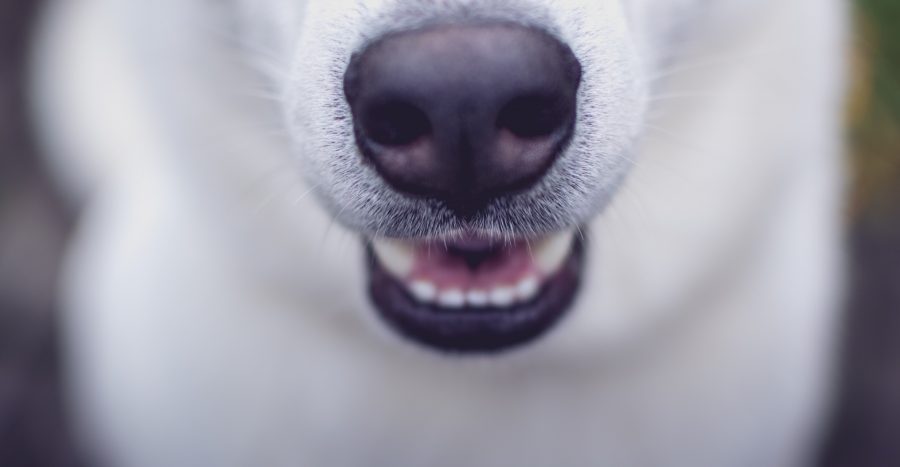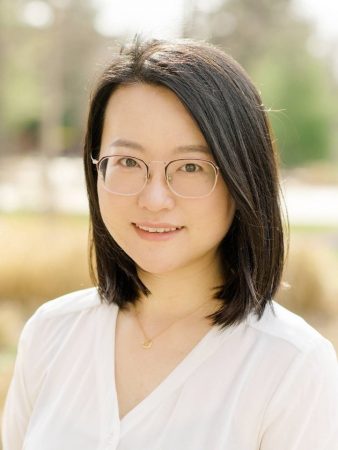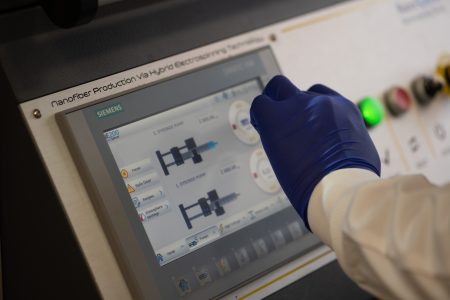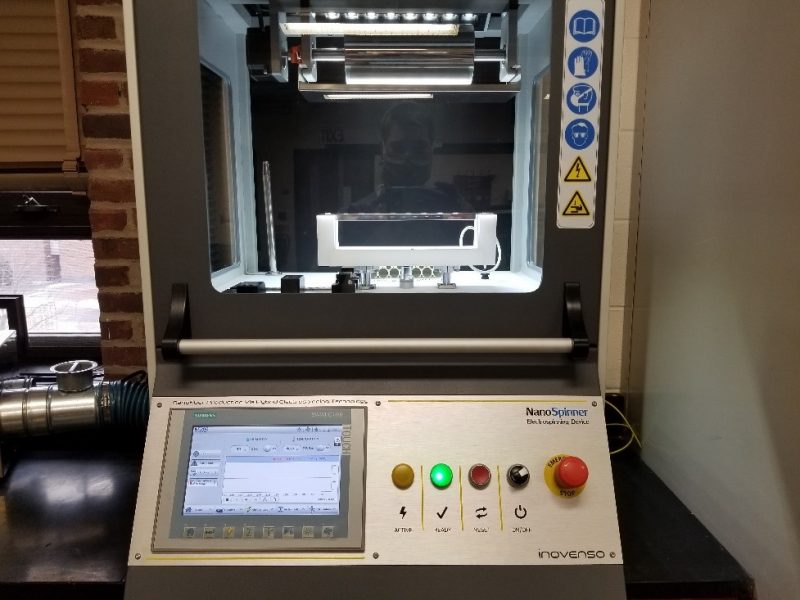
Yixin Liu shares her knowledge on Husky Bites, a free, interactive webinar this Monday, 10/17 at 6 pm. Learn something new in just 30 minutes or so, with time after for Q&A! Get the full scoop and register at mtu.edu/huskybites.

What are you doing for supper this Monday night 10/17 at 6 ET? Grab a bite with Yixin Liu, assistant professor of Chemical Engineering at Michigan Tech. Joining in will be Riley Smith, the first undergraduate student researcher to join Prof. Liu’s Smart Chemical and Biological Sensing Laboratory at Michigan Tech. Liu develops chemical sensors and biosensors, electronic noses/tongues and sensor data analytics.
During Husky Bites, Prof. Liu will share how she goes about developing an “electronic nose” using an array of gas sensors and a data-analyzing algorithm. The result is a device that can mimic our biological olfactory system, able to sense smells in various applications, such as gas pollutants and breath analysis for medical diagnosis.
The ideal electronic nose is capable of sensing far better than even the best human nose ( more like a dog nose). “Dogs have a superior sense of smell. With training, dogs can sniff out bombs and drugs, pursue suspects, search and rescue lives, and potentially detect human diseases—including cancer and diabetes—from smell alone,” Liu says.

Liu joined the faculty of the Department of Chemical Engineering as an assistant professor in 2020. She earned her PhD in Chemical Engineering from the University of Connecticut and her bachelor’s degree in Polymer Material Science and Engineering from Zhejiang University in China.

“Riley was the first undergraduate student to join my lab at Michigan Tech,” says Liu. He reached out to me last year after my brief presentation to the Michigan Tech AIChE student group, indicating his interest in undergraduate research.
“Riley is highly motivated and proactive,” adds Liu. “After training on the lab’s electrospinning machine for nanofiber fabrication, he took the initiative to come up with a detailed operation manual with pictures. Riley’s manual has helped many students in my lab to learn how to use the machine.”
“Once I heard Dr. Liu’s AIChE presentation, I reached out to learn more,” Smith adds. “I started working with Dr. Liu, and now I work along with many more students who have joined the team as the lab continues to grow.”
Liu’s interdisciplinary lab combines advanced nanostructured materials, device design, and data-driven approaches to develop high performance chemical and biological sensing technologies. Liu and her collaborators already have 4 US patents granted, with another six patent applications pending.

At Michigan Tech Liu and her research group work together to develop electrochemical sensors coupled with machine learning techniques. “The knowledge gained from our research leads us to other new low-cost biosensing devices and manufacturing processes,” says Liu.

Recently she was awarded an Engineering Research Initiation (ERI) grant from the National Science Foundation to develop a nanocomposite sensor for the simultaneous detection of glucose and cortisol.
“People with diabetes are 2-3 times more likely to have depression,” note Liu. “In addition, symptoms of depression and anxiety are often associated with elevated cortisol (the ‘stress hormone’) which can lead to the onset of type 2 diabetes. If we could monitor both glucose and cortisol levels in a cost-effective and effortless way, that could help manage both diabetes and stress—it could also prevent pre-diabetes from progressing to full-blown type 2 diabetes,” Liu says.

“One of my long-term research goals is to develop a low-cost, easy-to-manufacture and high-performance biosensing technology based on e-MIPS—electropolymerized Moleculary Imprinted Polymers. I think e-MIPS could become an important platform for detecting biomarkers in human biofluids,” she says. “This would allow for ‘decentralized diagnostics’—rapid medical testing that can take place outside a hospital setting. Testing could be done at a satellite lab, doctor’s office, or even at home.”
Developing a reliable sensor that can detect polluting gas in real time, at an early stage, even in aggressively high heat, is another one of Liu’s research projects.
“Monitoring and control of combustion-related gases, including oxygen, carbon monoxide and hydrocarbons, are a top priority in many industries,” she says. “To be effective, though, sensors must be operate at 800~1000 ◦C. Right now, very few sensors have been able to detect gases above 600 ◦C, even in a laboratory setting.”
Once achieved, though, Liu says real-time, high-heat monitoring could save energy and help reduce pollution emissions.

Prof. Liu, how did you first get into engineering? What sparked your interest?
My father is a mechanical engineer, and I have always watched him fix things and build new things at home since I was very young. I liked math, hands-on experiments, and exploring new technologies when I was in high school. It was quite natural for me to choose an engineering major when I went to university.
Hometown, family?
I grew up in Sichuan, China (hometown of spicy foods and the panda.) I was the only child of my parents (no siblings). My husband and I have a 4-year-old son.
What do you like to do in your spare time?
I have liked painting for years, and still do acrylic paintings in my spare time. I started to learn piano 5 years ago, and now I’m still learning, practicing, and having fun.

Riley, how did you first get into engineering? What sparked your interest?
I first got interested after having a conversation with my chemistry teacher in high school. I thought that engineering would be a fitting job—I knew I wanted to do something that required some type of problem-solving. After talking with a family friend who works in chemical engineering, my interest solidified. I finished my associate degree in science at a community college and started looking into four-year technological universities.
Hometown, family?
I am from Kalamazoo, Michigan. My family consists of my mom, a younger brother who is in his junior year of high school, an older sister who is getting married in October, and my dad who works in consulting.
What do you like to do in your spare time?
I like to spend a lot of time outdoors, whether hiking, kayaking, or hammocking. I have a small poodle mix who accompanies me on many of my outdoor ventures. I also like to work with my hands, on either woodworking projects or refinishing furniture.